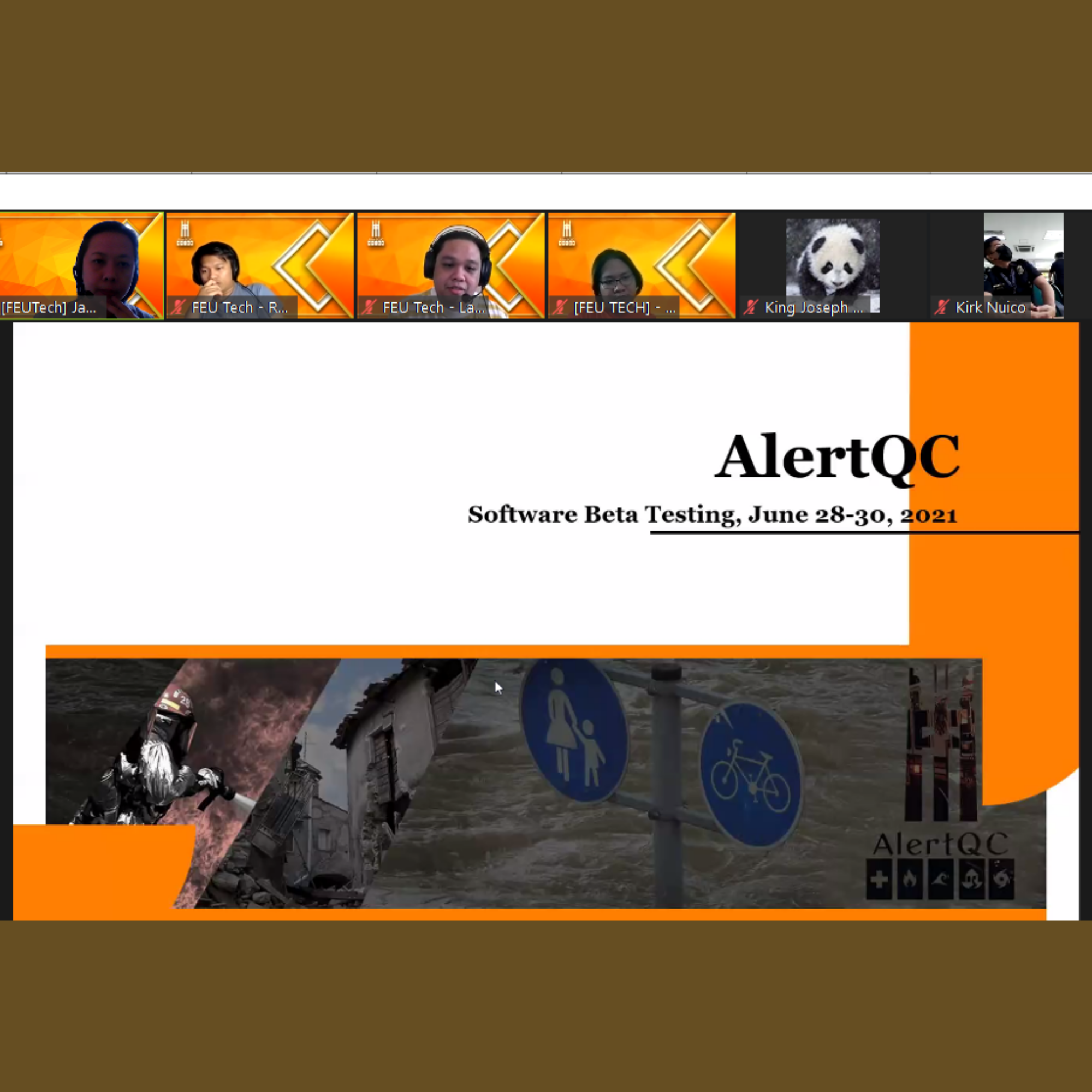LOOK: iTamaraws conduct the Alert QC Software Beta Testing on June 28-30, 2021 via Zoom.
Nobody knows when a disaster will come. It may happen today, tomorrow, next week, next month, or even in the next few years. But regardless of when it will occur, people ought to be prepared anytime—especially the emergency responders.
Being situated in the “Pacific Ring of Fire,” the Philippines is one of the most vulnerable Southeast Asian countries to experience frequent earthquakes and volcanic eruptions. In its official website, the Asian Disaster Reduction Center reports that an average of 20 typhoons (five of which are destructive) have struck Filipinos every year. The agency adds that the country’s geographical location and physical environment contributes to its high susceptibility to other natural disasters such as storm surges, landslides, and flash floods among others.
This is why a group of Information Technology students from FEU Tech came up with “Alert QC”, a web and mobile disaster utility and incident report management system that aims to speed up the community’s disaster response time. Through this app, citizens can report different types of emergencies including fire incidents, flooding, and vehicular accidents among others.
According to Lance Gonzales, they decided to focus first on Quezon City because it’s the largest city in Metro Manila in terms of land mass. He also shared how they started developing the app during the latter part of 2020, a few months before Typhoon Ulysses hit the Philippines.
“Even before we started our thesis, we already wanted to create a project that can help our society. We saw the public’s need to be informed about the different emergency hotlines because most of us do not know yet where or how we can report a certain incident. So when Typhoon Ulysses struck almost every part of Luzon, we further realized the importance of having a disaster response app,” Lance said.
Another team member, James Pugeda, explained the specifics and features of Alert QC as well as why the public should consider using it in the future.
LOOK: iTamaraws show the mapping feature of Alert QC during a meeting with Quezon City’s DRRMO.
“What’s beautiful about our app is the fact that it’s not only made for a specific person, but rather, anyone who uses our app can be notified about the reports,” he said. “It also has a mapping feature that allows you to see the nearest hospitals, fire stations, police stations, and of course, the evacuation centers which are very important in times of a disaster.”
In addition, the app exhibits a chatbot feature that allows users to get automatic and prompt responses to some frequently asked questions. This includes queries about emergency hotlines and types of disasters reported. Dr. Janice Abellana, the group’s adviser, considered this feature as a good edge and service for the app users.
“In the application, especially on the web, you can actually see an embedded portion of the NLP or the Natural Language Processing. This means that there is a bot that would automatically respond to you even without an actual administrator. So, when you have questions, expect that you’ll receive replies automatically. It’s already a part of machine learning as well,” she said.
Nevertheless, the team exclaims that they couldn’t have completed this project without the unwavering support and guidance of their professors at FEU Tech. The group members gave a special shoutout to Dr. Janice as well for her “very hands on” mentoring.
In relation to this, Joseph Garvida recalled how the learnings from their previous subjects in school contributed a lot in developing their thesis. “Creating the application really required us to have knowledge in mobile and web development. That’s why the previous lessons or subjects we had at FEU Tech helped us a lot in this journey, specifically, our Android and Mobile App classes. So even though we had a little bit of difficulty with regards to the framework we used, thankfully, we were already equipped with enough knowledge to still understand it.”

